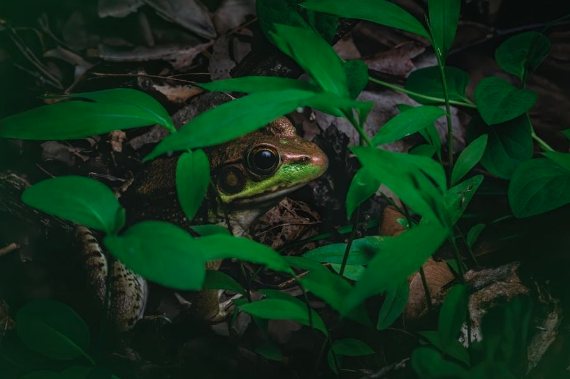Maryland is home to a wide variety of wildlife, including birds, mammals, fish, reptiles, and insects. But, my absolute favorite group of animals to photograph are the amphibians. Maryland is home to the Chesapeake Bay, which is fed by over 64,000 square miles of watershed. All of these rivers, streams, creeks, and ponds make a great home to a wide variety of amphibians.
The photo above is a photo that I have been trying to get for years. This is my favorite photo that I have ever taken. I was amazed at how lucky I was to witness such a sweet and tender moment between these two frogs. The Cope’s Gray Tree Frog can be hard to photograph for a variety of reasons. Firstly, most frog species are nocturnal. They only come out at night, when they don’t have to worry about the sun drying out their skin and when they are harder to spot by predators. Secondly, frogs are masters of camouflage; especially the Cope’s Gray Tree Frog. It has bumpy, grayish-brown skin to help it blend in with the trees that it spends most of its time in. Other frogs usually have brown or green skin to help them blend in with the plants or mud in which they live. Finally, frogs can be hard to find because many of them have limited habitat ranges and small populations.
Why should you care about frogs? Frogs play an important role in the food chain; both as predator and prey. Frogs eat large amounts insects and play an important role in controlling the populations of insects we consider pests. They also play the role of prey; providing an important food source for predators such as birds and snakes. But frogs aren’t just important to the food chain; they also tell us a lot about how healthy the environment is. Frogs are what we call an “indicator species.” They have very permeable skin. Substances can enter or exit their body very easily. This means that they are very sensitive to changes in the environment. If something is going wrong in the environment, they’re the first to let us know. Right now, around the world, over one third of all frog species are threatened, endangered, or extinct. Some of the main threats to frog species around the world are pollution, loss of habitat, invasive species, and the chytrid fungus; all of which have been exacerbated by climate change.
The frogs are disappearing. They’re trying to let us know that something is wrong. We need to listen to them before it’s too late.
Reference: https://www.fws.gov/endangered/news/amphibians.html

